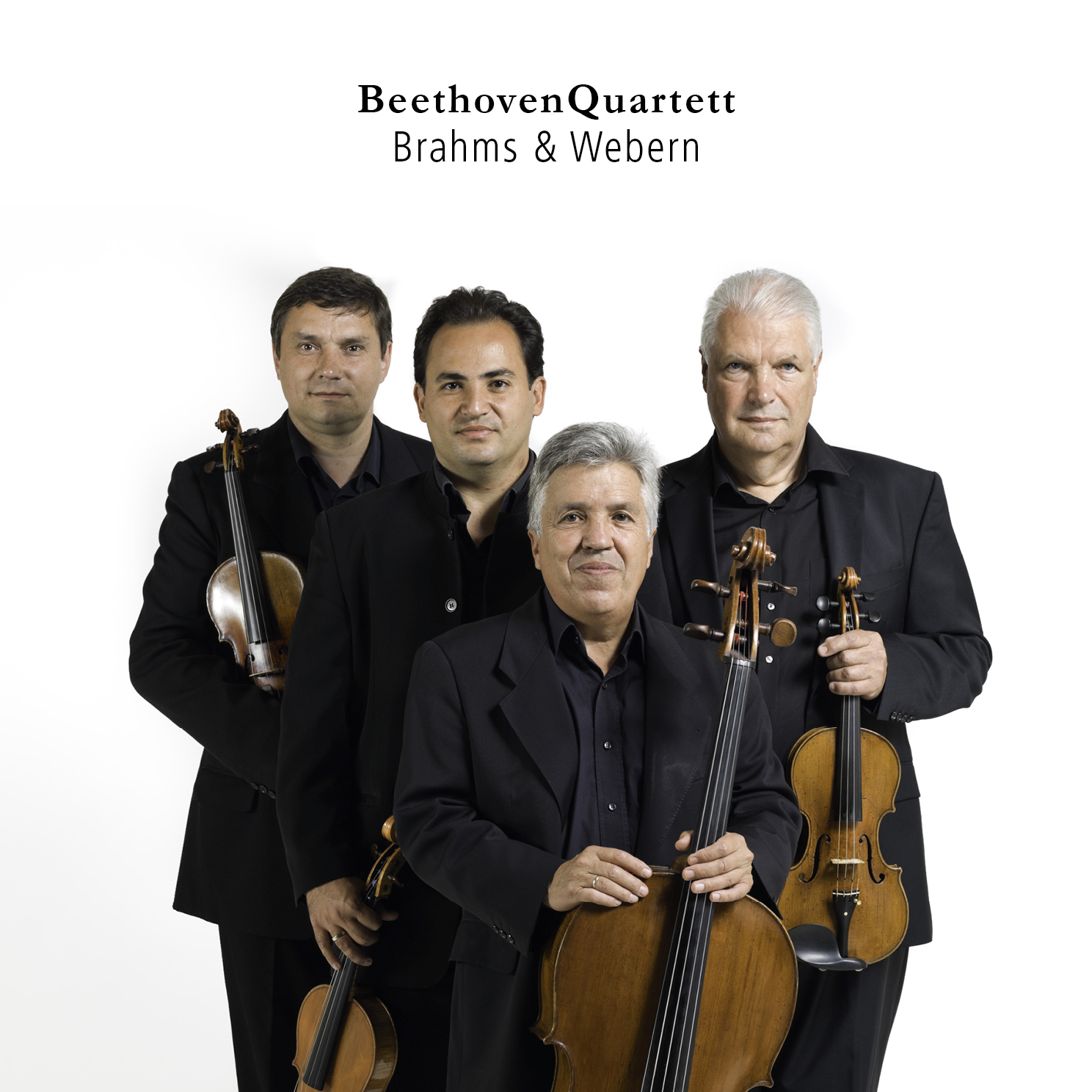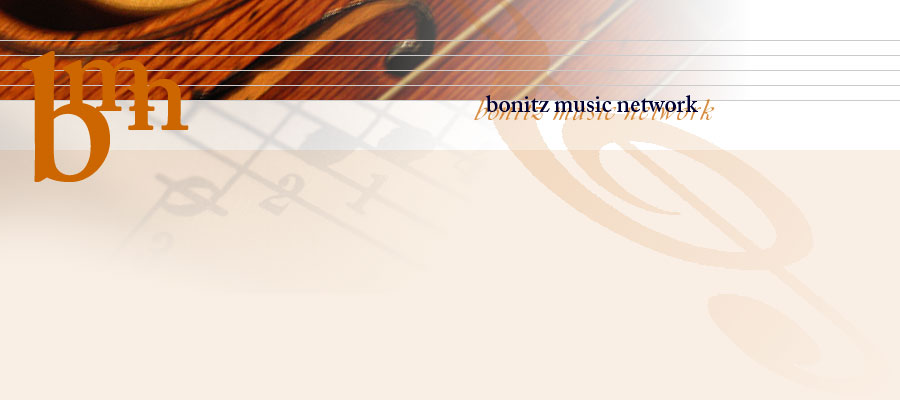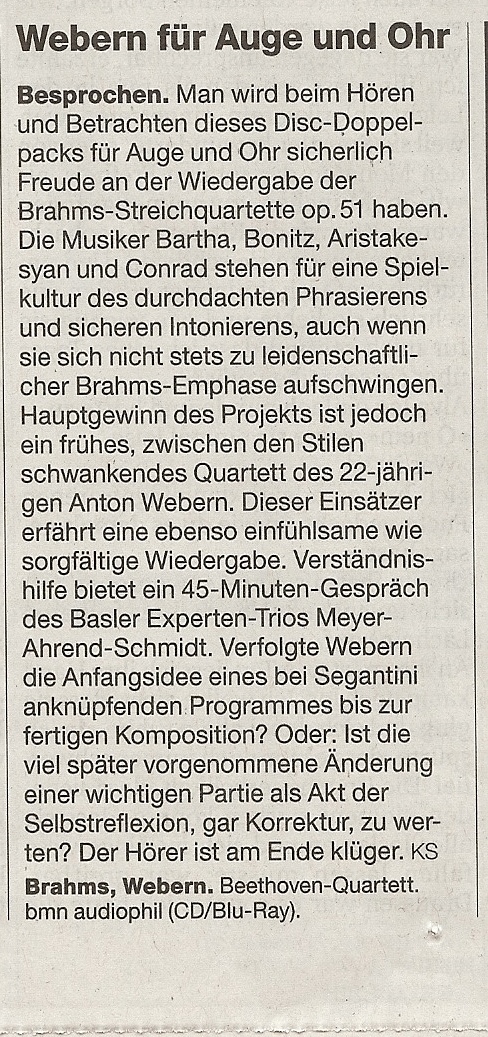|
|
Brahms & Webern

Basler Zeitung 6.Mai 2016
www.opusklassiek.nl
March 3, 2016
Deze uitgave bevat een primeur: de eerste opname van Anton (von) Weberns eendelige strijkkwartet uit 1905 dat ontstond in de zomer van 1905 toen de eenentwintigjarige Webern op de Preglhof in het Oostenrijkse Oberdorf bij Schwabegg verbleef, de buitenplaats van de familie. Hij had kort daarvoor, in juni, ‘Langsamer Satz', eveneens voor strijkkwartet, voltooid. Dit stuk ademt in zijn motivische verwerking nog duidelijk de ‘geest' van Brahms, wat ook iets zegt over de invloed van zijn leraar Arnold Schönberg die de muziek van Brahms niet alleen een warm hart toedroeg maar zijn eigen werk naar zijn grote voorganger modelleerde. Evenals bij Brahms wordt bijvoorbeeld het hoofdthema deels in het tweede thema gespiegeld en leiden mutaties in tonaliteit en ritme tot een nieuw en uiterst contrastrijk postuur. Interessant is dat Webern zijn conceptuele overdenkingen voor zijn strijkkwartet neerschreef in een notitieboekje dat gemakkelijk in de jaszak paste. Zo kon hij tijdens zijn wandelingen door veld en beemd zijn muzikale invallen eenvoudig verankeren. Natuurlijk dringt zich hier de vergelijking met Beethoven op.
De beide strijkkwartetten van Brahms behoren tot de canon van de negentiende-eeuwse kamermuziek en mogen zich alleen al daarom verheugen in tientallen opnamen. Het BeethovenQuartett laat zich zowel in dit repertoire als in Weberns strijkkwartet van zijn beste kant zien. Het ensemble kent fraai samenspel in combinatie met een hoge klankcultuur en getrouwheid aan het notenbeeld, zonder evenwel de eigen identiteit daaraan op te offeren. Op de Blu-ray disc vindt u naast het programma op de cd de reeds vermelde aanvullingen op het Webern-kwartet, de Siegantini-triptiek en een lang gesprek van bijna 45 minuten van Thomas Ahrend met Felix Meyer en Matthias Schmidt over Weberns strijkkwartet. Meer dan een saillant detal: Laurentius Bonitz is niet alleen lid van het BeethovenQuartett maar tevens oprichter van en motor achter het BMN Audiophil label
Contrasting derivatives
Concerning the String Quartets op. 51 by Johannes Brahms and Anton Webern’s String Quartet (1905)
One of the many different possibilities of dealing with music discursively is to place it in historical contexts. Such historical awareness can give motivation and orientation to the production of music and help in its comprehension. (Moreover, the need to «understand» music and not just simply «to listen to it» is in itself a historical phenomenon.) Johannes Brahms is certainly one of the 19th century composers whose oeuvre was conditioned by the historical self-reflection of the musically educated bourgeoisie. Concurrently, this body of work also decisively influenced and enrichedthe developing music culture.
...a surviving draft copy («Form-Entwurf») of the quartet, dated July 13, 1905, seems to suggest that the initial idea for the conception of the piece is related to Giovanni Segantini’s so-called «Alpen-Triptychon» («Alpine Triptych»). (Cf. the reproductions of the Triptych included in this Blu-ray disc as well as the draft copy related to the discussion between Thomas Ahrend, Felix Meyer, and Matthias Schmidt.) In the draft copy, the three paintings (La Vita, La Natura, La Morte) are referred to by their alternative titles sometimes used in German-speaking areas «Werden», «Sein», and «Vergehen» («Becoming», «Being», «Passing away») and, correspondingly, the quartet was outlined in a tripartite structure. Three parts are also recognizable in the completed composition: The first part (measures 1–90) begins with a slow introduction, which develops a characteristic three-tone motive and leads to a clearly articulated theme in E major reminiscent of Richard Strauss (m. 44 ff.). The second part (measures 91–199) begins with a slow fugue in C major and leads to a passage using motivic material from the first part, initiating a climax. The third part (measures 200–279) starts with a pastoral D major theme in 6/8 and leads to a concluding section in E major, where the three-tone motive of the introduction reappears. Clear reprises, as found in classicalsonata-allegro forms, are missing, a ‘classical’ form is not recognizable.
|
Link
.jpg)


|



